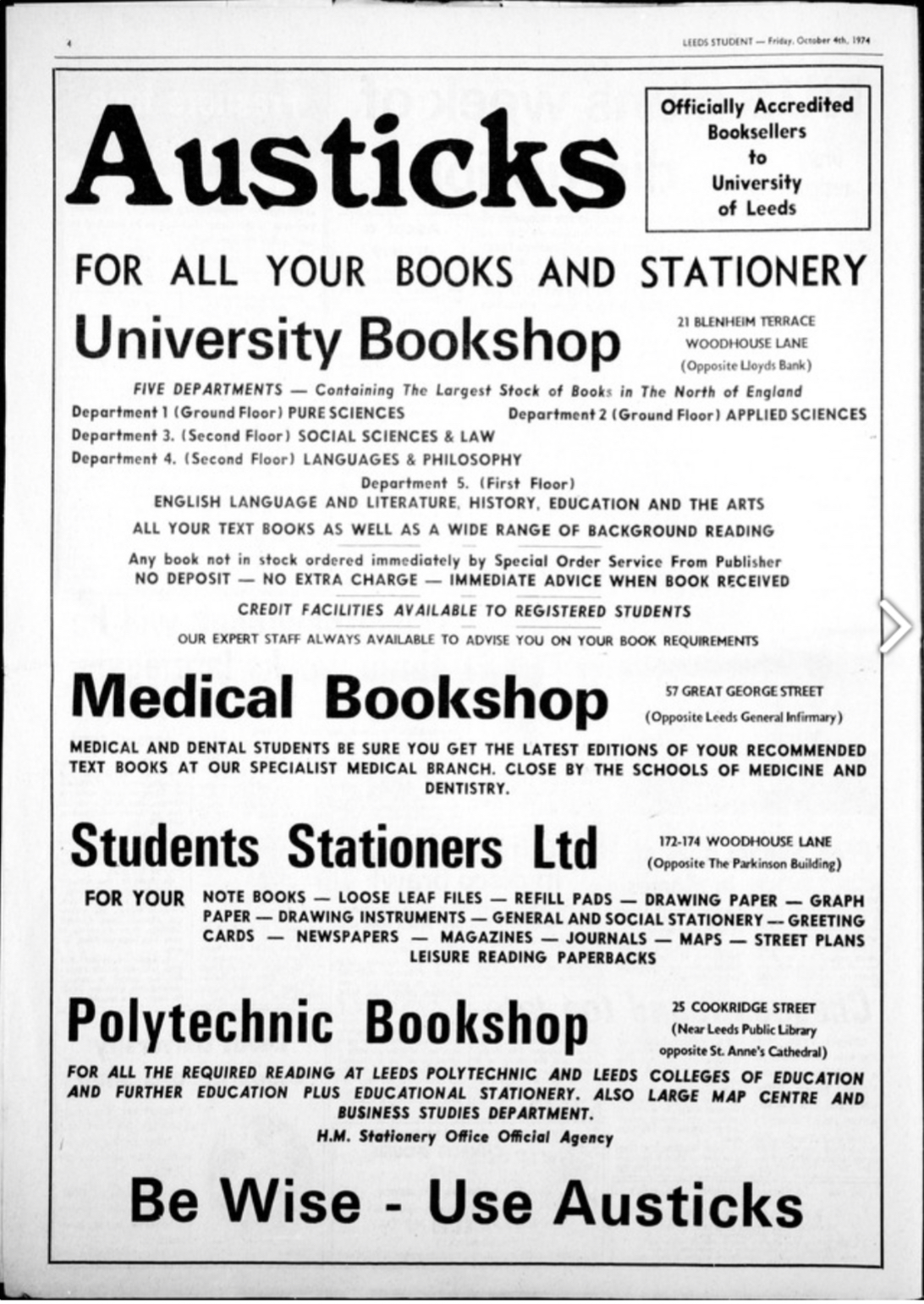When I started my degree, we weren’t bombarded with information in the way that freshers are now. Our only source of information was the noticeboard in the English department, which in those days was situated in one of the brutalist concrete buildings that had been built when the university expanded in the sixties. We were on the floor above Biosciences, and the department was really just a corridor of offices, at the end of which was a small departmental library. We constructed our timetables from the noticeboard. Most of it was lectures, which were given in another brutalist concrete building, imaginatively named the Lecture Theatre Block. A few years later, it became the Roger Stevens Building, after a former Vice-Chancellor. The V-C in my day was Edward Boyle, Lord Boyle of Handsworth. We occasionally saw him on the bus travelling down Woodhouse Lane on his way to work.

The system at Leeds for the English degree was that everyone followed the same curriculum for the first year, and then chose a pathway for years two and three. So, the hundred or so of us who started the degree had a varied programme that aimed, I suppose, at giving us a broad base for our further studies. Some of it we were familiar with from Eng Lit A level, while much of it was new to us. The different strands of the degree would be called modules now, and each would have its own rationale and assessment regime. Back then, we had lectures for what you might label mainstream English Literature – poetry and drama of the sixteenth and seventeenth century – backed up by a weekly tutorial in a group of three or four. The tutorials took place in a lecturer’s office, and the tutor had complete control over the weekly topic. So the tutorials did not necessarily reflect the content of the lectures, and that kept us on our toes. You needed to be prepared: there was no hiding place when the class consisted of you and two or three others.
The other elements of the programme were organised slightly differently. Anglo-Saxon history and literature was a lecture series, followed by a seminar, which, in my case, was convened by a young post-grad student, one of the few in the department in the days before mass PhD programmes. In addition, we had a language lecture, looking at accent, dialect and historical linguistics. So, while we (or at least I) had a relatively comfortable and familiar immersion in metaphysical poetry and Jacobean drama, there was a very steep learning curve when it came to grappling with The Battle of Maldon in the original, or the transcription of Received Pronunciation in the international phonetic alphabet.
Add to this activity the subsids, both of which were a one-hour lecture plus a one-hour seminar per week, and we were busy. We spent our money on the set texts at Austick’s bookshop across the road from the Parkinson building, and began to get used to the routine. The Lecture Theatre block became a second home, and I loved it. It had paternoster lifts, basically a series of open boxes going up and down the building, which you had to jump in as they passed. There was a café on the ground floor where we often met before and after lectures. Coffee (execrable, instant Nescafé in a styrofoam cup) was 5p, and we drank it and ate Kit-Kats while sitting around what seemed to be a water feature, but was in fact the cooling system for the building.

I made friends quite easily, of necessity really. We all did. Most of my peers were, like me, the product of the grammar school system. Technically, I had attended a comprehensive school, as Manchester had reformed its system the year after I passed the Eleven Plus. My boys’ grammar school became a high school, amalgamating with a secondary modern school on the other side of the playing fields. In truth, though, little changed, and the two schools were in effect still separate entities. At Leeds, there were a few public school types, who all seemed to have been herded into a hall of residence in an old building on campus, but most of us were first generation university students, enjoying an opportunity that would have been beyond our parents’ wildest dreams. It’s worth remembering that university education was still quite a rare experience. In 1973, only about 10% of eighteen year-olds went onto higher education, so we were, in effect, a kind of elite. Before the expansion of universities in the sixties, the percentage was about half of that, so even though many more of us were studying for degrees, it was still an experience denied to the vast majority of people. Remember, back then, you could leave school at 15, and many left effectively at 14, attending FE college to learn a trade on day release in their final year.
So, we felt privileged, and also excited to be embarking on what was almost guaranteed to be a life-changing experience. Next time, I’ll begin to explore the detail of the degree.
![]() Eng Lit Life, 1973 by Dr Rob Spence is licensed under a Creative Commons Attribution-ShareAlike 4.0 International License.
Eng Lit Life, 1973 by Dr Rob Spence is licensed under a Creative Commons Attribution-ShareAlike 4.0 International License.
Good memories, enjoying your reflections
You can correct me when I go wrong, Lin!